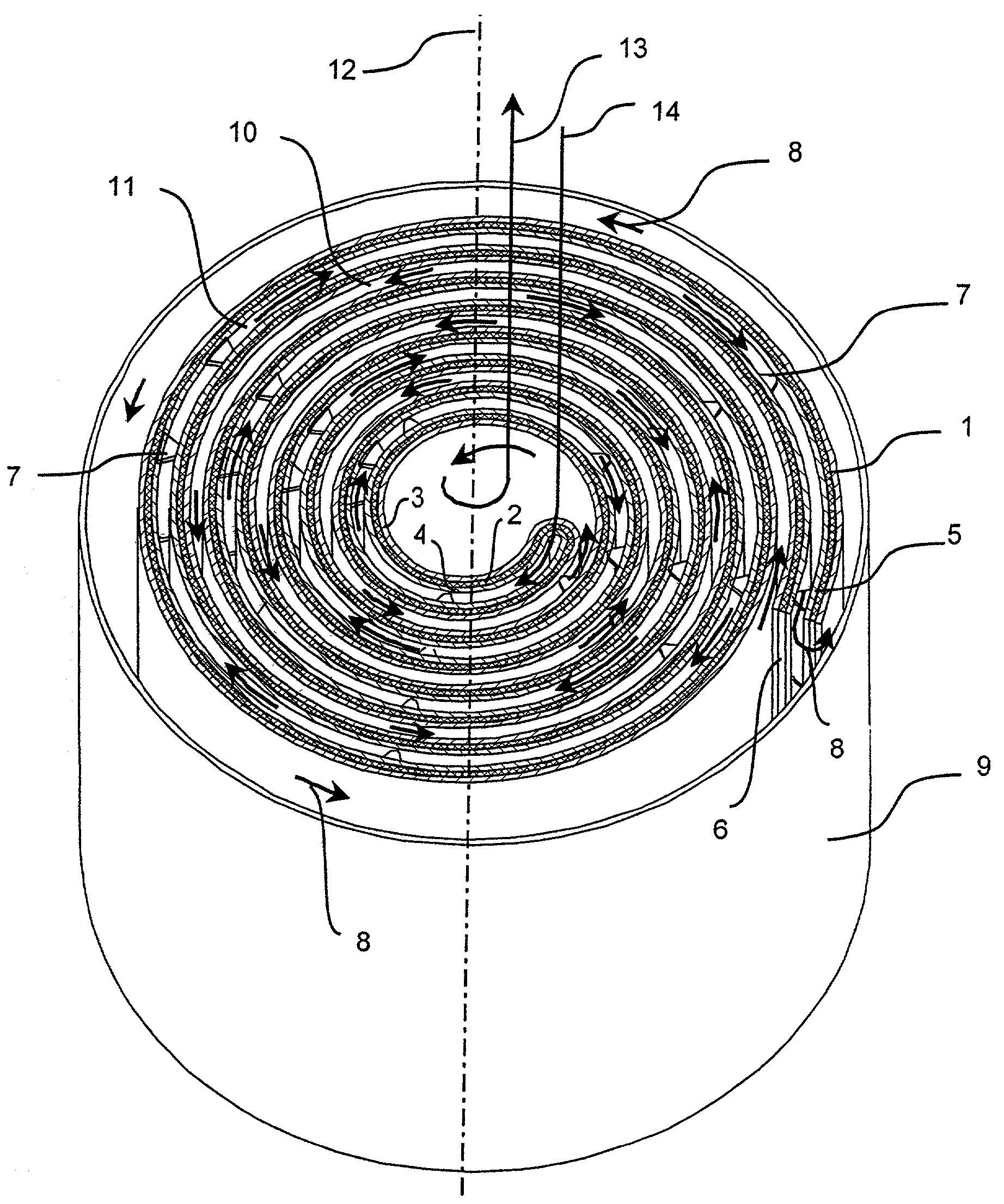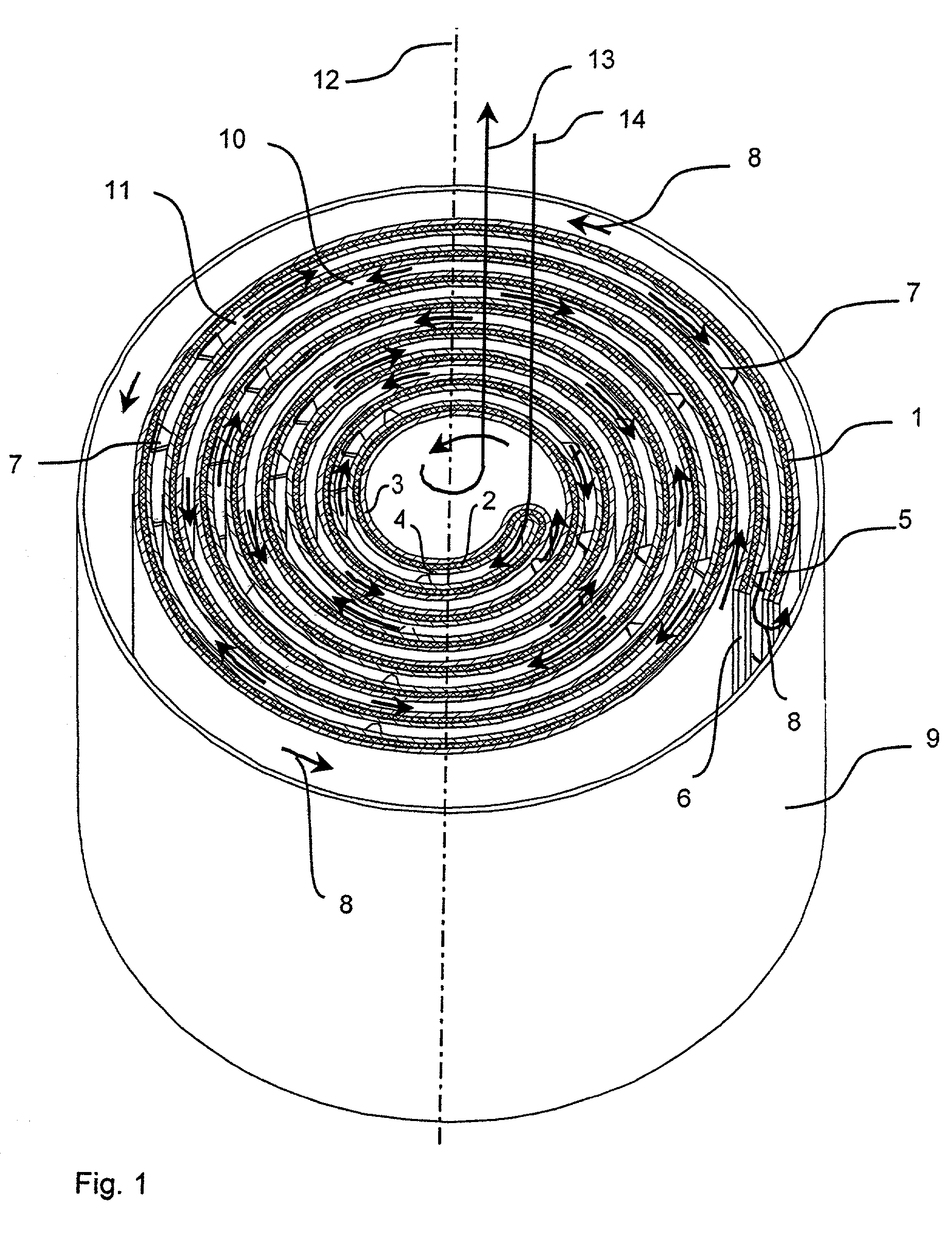Wick arrangement for an anesthetic evaporator
a technology of anesthetic evaporators and wicks, which is applied in the direction of inhalators, respirators, lighting and heating apparatus, etc., can solve the problems of increased volume of evaporator chambers, adverse effect on the necessary constancy of anesthetic concentration, and additional increase of the volume of anesthetic evaporators
- Summary
- Abstract
- Description
- Claims
- Application Information
AI Technical Summary
Benefits of technology
Problems solved by technology
Method used
Image
Examples
Embodiment Construction
[0018]Referring to the drawings in particular, FIG. 1 schematically shows a perspective view of a wick 1, which comprises carrier material 2, which is bent over in a U-shaped pattern at a central axis 12 and is provided with wick material 3, 4 on both sides. A first wick section 5 and a second wick section 6, which are of equal size and are flatly in contact with one another, are formed by the folded-over wick 1. The carrier material 2 consists of special steel, while the wick materials are thin, absorbent nonwovens which are connected to the carrier material 2.
[0019]The wick 1 is accommodated in a cylindrical housing 9, which is partially filled with a liquid anesthetic, which is not shown in FIG. 1 and is to be evaporated. A first flow channel 10 is formed by the consecutive outer sides of the wick sections 5, 6 with the wick material 3. The inner sides of the wick sections 5, 6 with the wick material 4 form a second flow channel 11. A first gas channel 13 opens into the first flo...
PUM
 Login to View More
Login to View More Abstract
Description
Claims
Application Information
 Login to View More
Login to View More - R&D
- Intellectual Property
- Life Sciences
- Materials
- Tech Scout
- Unparalleled Data Quality
- Higher Quality Content
- 60% Fewer Hallucinations
Browse by: Latest US Patents, China's latest patents, Technical Efficacy Thesaurus, Application Domain, Technology Topic, Popular Technical Reports.
© 2025 PatSnap. All rights reserved.Legal|Privacy policy|Modern Slavery Act Transparency Statement|Sitemap|About US| Contact US: help@patsnap.com



